Hey community !
TL;DR : How can I Read data from a lookup that was fetch in a previous Read data ?
I have a business process that is called when a field in an object is changed. Based on this, I get the object ID and read the data from it. Until then, no problem.
This object contains lookup fields (they are all filled in) and I also need to read the data from these objects.
Here is my business process, I will explain what I do after the screenshot :
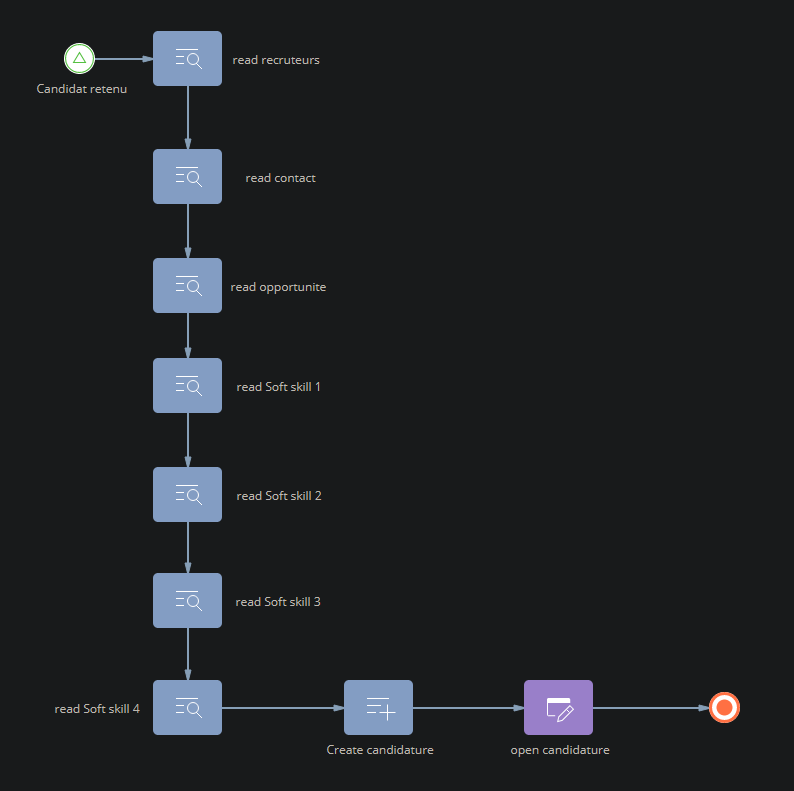
So my "Candidat retenu" signal passes the object ID which is changed to "read recruteurs" and I ask for all the lines in the recruteurs object :

Based on the data received, I have my second read data (read contact) which I have configured as follows:
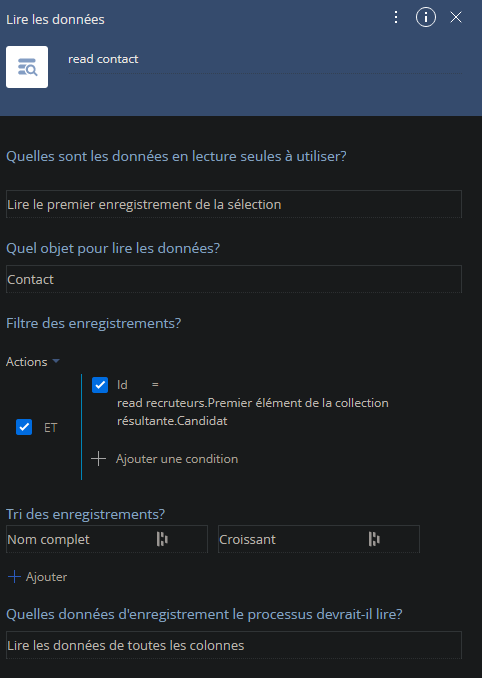
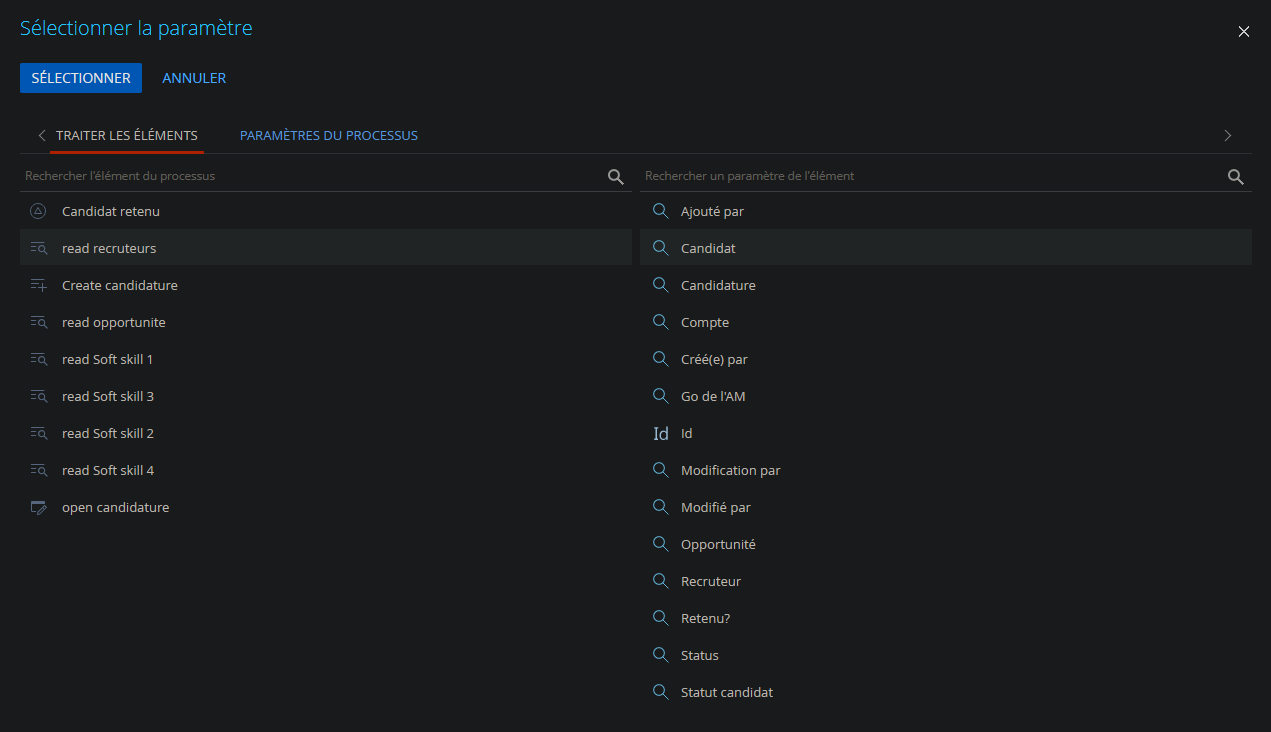
All read data are very similar after that:
"read opportinite" : Opportunité.id = read recruteurs.Premier élément de la collection résultante.Opportunité
"read Soft skill 1" : custom object.id = read contact.Premier élément de la collection résultante.Soft Skills 1
"read Soft skill 2" : custom object.id = read contact.Premier élément de la collection résultante.Soft Skills 2
"read Soft skill 3" : custom object.id = read contact.Premier élément de la collection résultante.Soft Skills 3
"read Soft skill 4" : custom object.id = read contact.Premier élément de la collection résultante.Soft Skills 4
Based on all previously queried table I create a new object "candidature" :
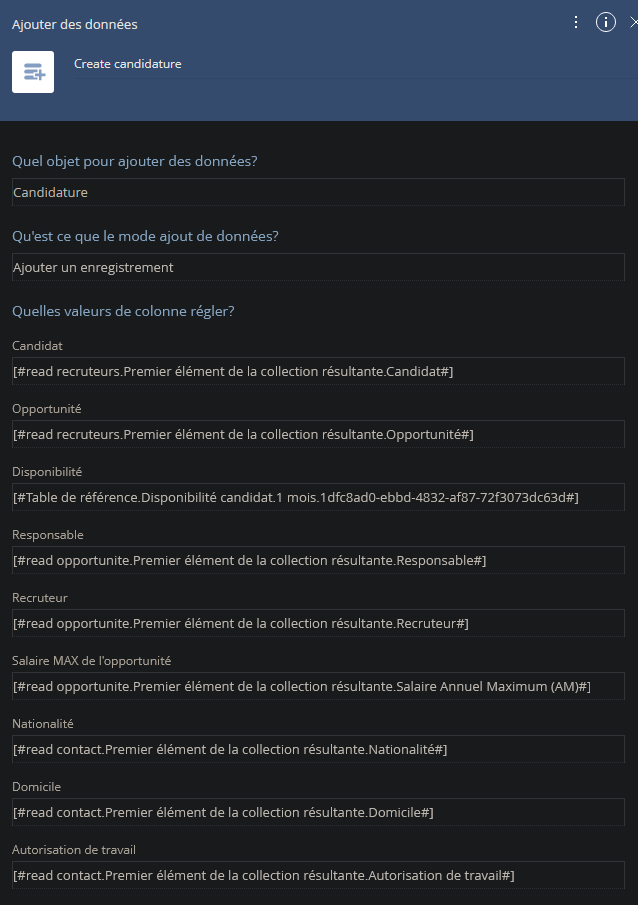
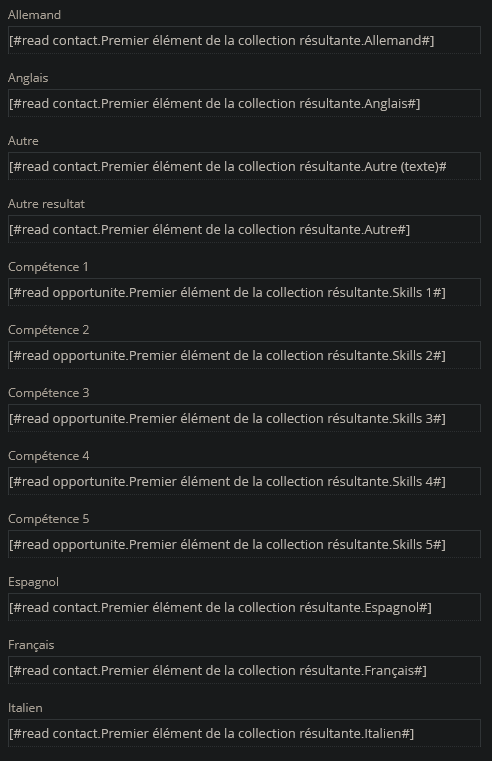
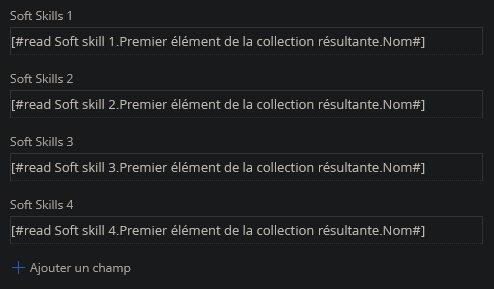
All fields which I try to query data from are filled in.
Unfortunately when the candidature object is created the only fields that are filled in are the fields from "read recruteurs" and the "Disponibilité" field and I don't understand why. In the process diagram everything's "working" :
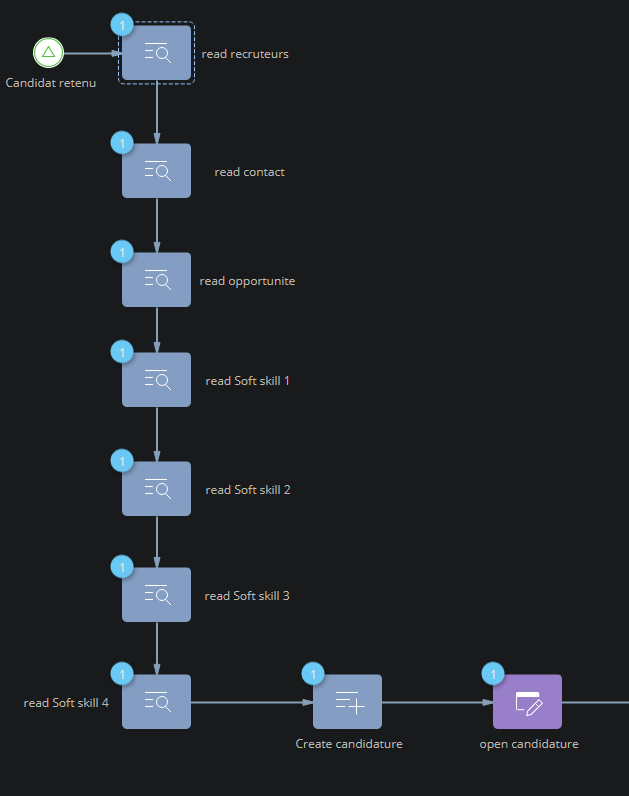
I don't have any errors and I don't understand what are my mistakes.
How can I query data from objects previously queried like I'm trying to do ?
Thanks in advance for your response !
Best regards,
Julien Gunther